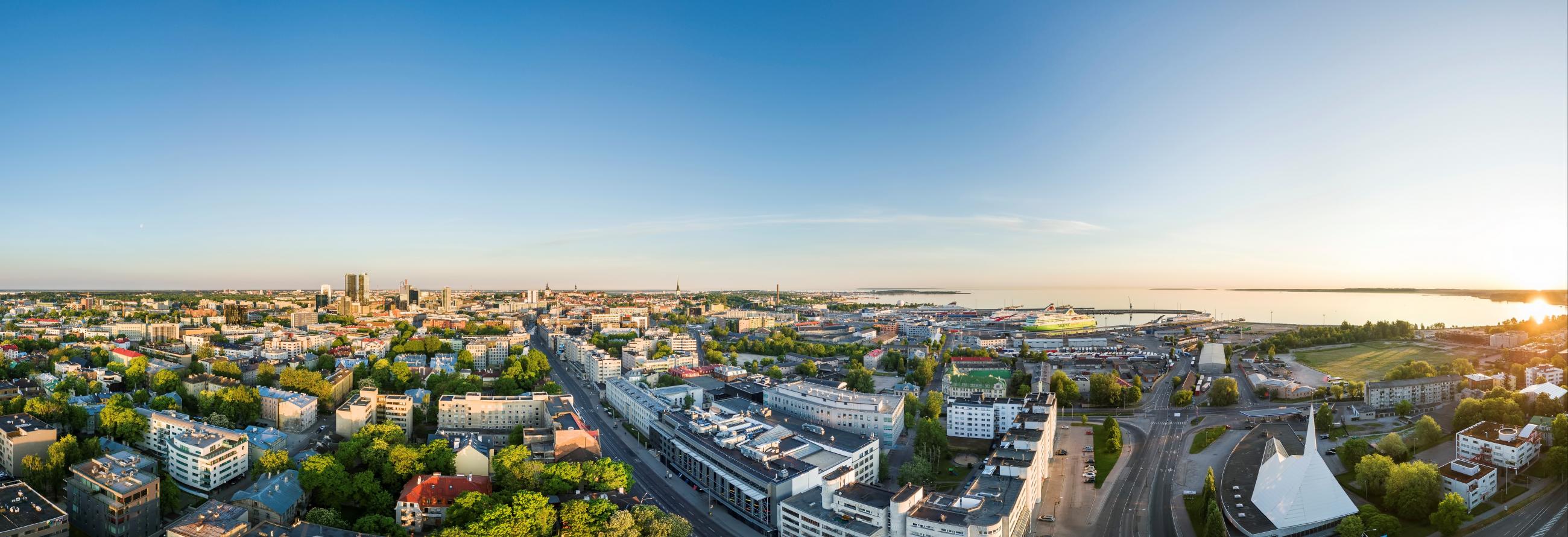Campus
We are located in the centre of Tallinn, next to Kadriorg Park and the Tallinn bay. A strip of land next to Narva Road contains most of our educational, research and creative activities. Only a few areas of study are located outside the main campus.
.jpg)
The Latin names of Tallinn University buildings symbolise their values.
Opening hours of Tallinn University buildings
| Building | Mon–Fri | Sat | Sun |
| Mare | 7:00–23:00 | 7:00–23:00 | 7:00–23:00 |
| Astra | 7:30–20:00 | 7:45–18:00 | - |
| Terra | 8:00–20:00 | 8:00–18:00 | - |
| Nova | 7:30–22:30 | 8:00–20:00 | - |
Terra
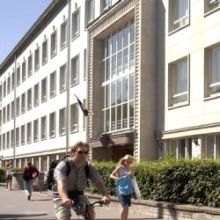 |
Narva rd 25 Terra (Latin: the earth – represents long academic traditions and the setting of standards for oneself; like the wise farmer who accumulates wisdom, by learning and ploughing his/her own furrow, a person discovers new knowledge) is the oldest building in Tallinn University; it was built for the Tallinn English College in 1938–1940. The architecture of this well-preserved building is characteristic of the late 1930s and the building is under heritage protection (architects Alar Kotli and Erika Nõva). The building has a long and memorable history – especially for all those people who have studied and taught there during decades and received their graduation documents in the Assembly Hall. The Assembly Hall has also been the venue for the investiture of every rector of Tallinn University. |
Mare
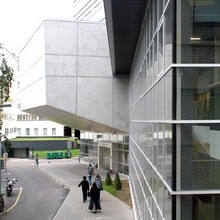 |
Uus-Sadama 5 Mare (Latin: a sea – represents freedom and openness) is spacious and full of light; it was designed to allow sunlight to reach 80% of the rooms. Study and research facilities have been united here in a unique way according to the visions of some young Estonian architects. Lecture rooms equipped with modern technology are located on the lower floors of the building; they are also set up to allow broadcasting on the Internet. The work places for researchers are located above the second floor and enjoy a more peaceful environment. The building was completed in 2006; the architects were Mattias Agabus, Eero Endjärv, Raul Järg, Priit Pent and Illimar Truverk. |
Nova
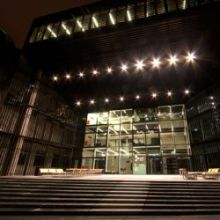 |
Narva rd 27 Nova (Latin: new – represents revitalisation and progressive development) in the courtyard of the university is the most modern film and media school in Europe and includes everything necessary for lectures and practical work: individual and group work rooms, lecture halls, seminar rooms, a film pavilion, television studio, makeup and costume rooms, a sound studio, the Tallinn University cinema with 105 seats, storage rooms for filming equipment and a computer class. The building was completed in 2012, designed by architects Karli Luik, Maarja Kask and Ralf Lõoke. |
Silva
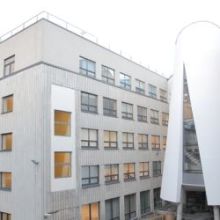 |
Narva rd 29 Designed by the architect Ester Liiberg, Silva (Latin: a forest – represents researchers and scientists – like the forest giants, they are upright pillars of society) was completed in 1982 and is a typical example of Soviet architecture. SILVA was one of the first buildings built to relieve the lack of space in the university. When the long-awaited new building project started, a group of students of the Estonian language together with a lecturer Maia Väkram, took bunches of violets and placed them in the foundation ditch of the building. Since then the university has been constantly growing – both by the number of people as well as the number of buildings. |
Vita
/vita-02_0.jpg) |
Narva rd 27 (entrance from the Nova building) Vita (Latin: life - represents vitality, viability and constant development). The new campus building was built in the beginning of 2020. The building was built in place of a demolished building from 1964, next to Nova and connecting to Terra. It was a finishing touch for the whole campus. The building was designed by Maarja Kask, Ralf Lõokene, Kaisa Simon and Pelle-Sten Viiburg. In the Vita building, you can find BFM, School of Natural Sciences and Health and our sports teams. There are:
In the end of the year 2020, an audiovisual installation “Gold mountain” will be presented in front of the Vita building. You can see the Vita building plan form here. |
Astra
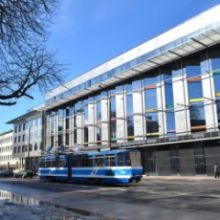 |
Narva rd 29 Astra (Latin: a star – represents the relentless pursuit and achievement of goals) This building is symbolised by laboratories. For example, there are psychology laboratories, computer laboratories, laboratories of spectrometry, chromatography, cell biology and biochemistry. The building supports the development needs of the institutes dealing with unique research topics and creates an environment that allows synergy between researchers. The building was designed by Ignar Fjuk and completed in 2012. |
Academic Library
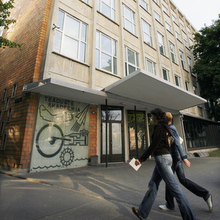 |
Rävala bvd 10 Information desk: +372 6659 439 The Tallinn University Academic Library (officially abbreviated TLÜ AR) is a research library established in April 1946 as the Central Library for the Estonian Academy of Sciences of the Estonian SSR. Since 2003, it has been the TLU libary. The oldest books in our collection date back to the 16th century. The library is home to over 2.6 million items, with 76 000 items in reserve. In addition, the library offers access to electronic resources. |
Archaeological Research Collection of Tallinn University
| Rüütli 8 and 10 Telephone: +372 6836 469 In the old town buildings, we house the Archaeological Research Collection. The buildings also host the employee offices, laboratories and the archaeological museum. The TLU Archaeological Research Collection is a state asset with a history reaching back into the 1830s. The collection holds item collections (~1.3 million findings), numismatic and precious metal item collections (~106,000 coins and ~1,300 metal items); archaeoosteology collections (human, animal, bird and fish bones, ~42,000 sets); archaeological archives or the document and book collections, which include manuscripts. The exposition compiled from these collections, called the archaeological museum, gives an overview of ancient history of Estonia and introduces the archaeological research conducted in Estonia.
|
Haapsalu College
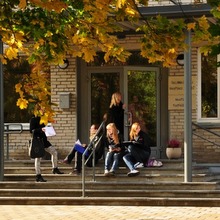 |
Lihula mnt 12/1, Haapsalu Telephone: +372 4720 240 Tallinn University Haapsalu College is a higher education institute, which turns the resort town of Haapsalu into a university town and allows access to higher education in novel and unique areas of study in Estonia. |
Räägu dormitory
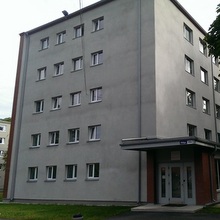 |
Siidisaba st 4 Telephone: +372 5689 2302 The dormitoy was built in the 70s as a hallway-type hostel with common kitchens, leisure areas and sanitary rooms. Each floor has 23 rooms. The rooms are meant for two or three students and have beds, lockers, a desk, chairs and a small fridge. The ground floor has a room for bicycles and the wash room. Access to the dormitory and your own floor is by magnetic card. |
Karu dormitory
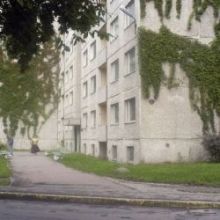 |
Karu st 17 Telephone: +372 5301 8311 The Karu 17 dormitory is located next to the University in the centre of Tallinn. It has 451 beds, 70 of which are reserved for international students. |
Västriku dormitory
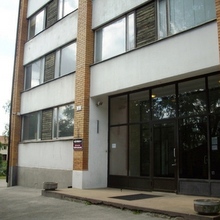 |
Västriku st 8 Telephone: +372 5629 6776 The house was built in the beginning of the 1970s as a dormitory. Until spring 2009 the house was used by the Estonian Naval Academy. |
